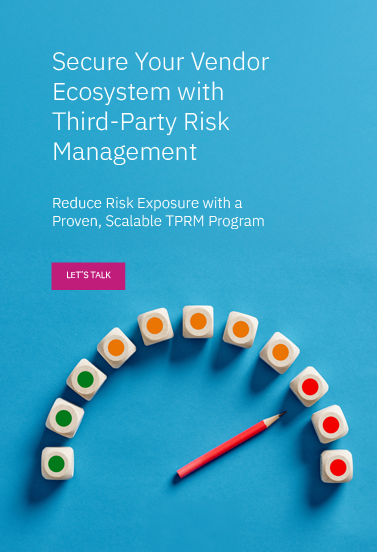



Vendors play a crucial role in business operations and introduce hidden security risks. A vendor-related breach can expose sensitive data, cause compliance violations, and disrupt business continuity. Aujas Cybersecurity's Third-Party Risk Management (TPRM) services help organizations design, build, and operate a comprehensive vendor risk program that's scalable, measurable, and aligned with compliance goals.
Our Build-Operate-Automate model helps businesses in industries, such as Banking and Financial Services, Healthcare, Retail, Government, and Technology, secure vendor ecosystems and minimize security vulnerabilities.
We offer end-to-end TPRM solutions, ensuring your organization is resilient against third-party risks.
Develop tailored TPRM frameworks, policies, and processes, including risk tiering, assessment criteria, communication templates, and reporting formats.
Execute end-to-end assessments, including questionnaire development, evidence validation, risk analysis, and onsite audits, mapped to regulatory, industry, and internal standards.
Design and support the deployment of technology solutions to streamline assessment workflows, control uploads, role-based access, and dashboard configurations.
To drive informed decisions, generate comparative risk profiles, dashboards, audit reports, and actionable mitigation recommendations.
Map assessments to frameworks like ISO 27001, HIPAA, PCI-DSS, and GDPR. Provide audit-ready outputs and help ensure policy-to-control traceability.
Manage large-scale vendor assessment campaigns, including follow-ups, remediation tracking, and stakeholder engagement from Aujas delivery centers.

Effective TPRM helps financial institutions mitigate vendor-related breaches by identifying risks, enabling real-time monitoring, and ensuring compliance with regulations such as PCI-DSS and GDPR.

TPRM is critical in securing vendor relationships, proactively managing risks, and maintaining HIPAA compliance to protect sensitive patient data in the healthcare sector.

Manufacturers rely on TPRM to strengthen supplier security, reduce cyber risks, and maintain operational continuity, minimizing disruptions across the supply chain.

For retailers and e-commerce businesses, TPRM enhances vendor security, safeguards payment data, and upholds PCI-DSS compliance- helping prevent fraud and protect brand reputation.
Copyrights © 2025 All Rights Reserved by Aujas.